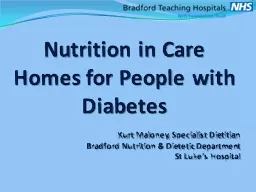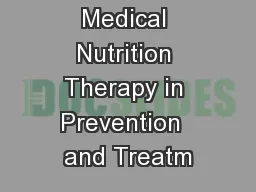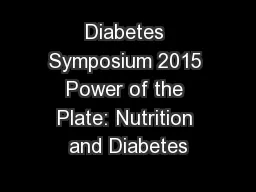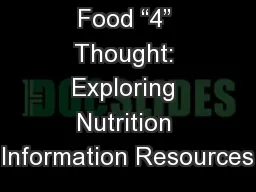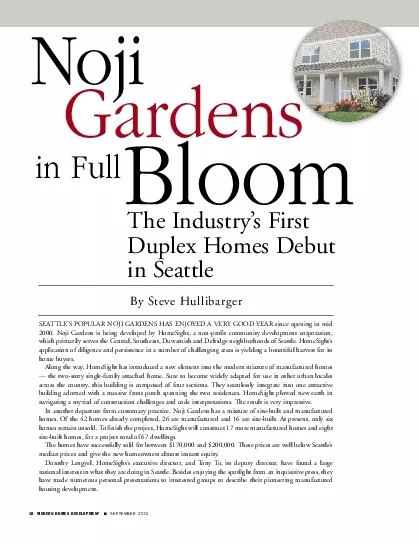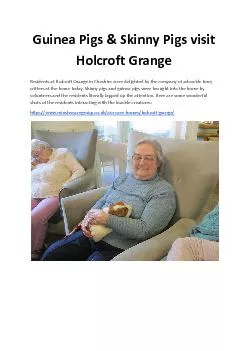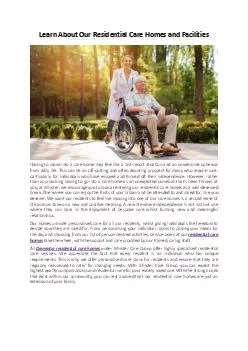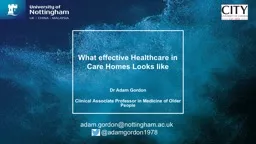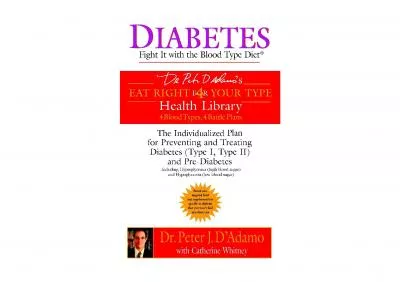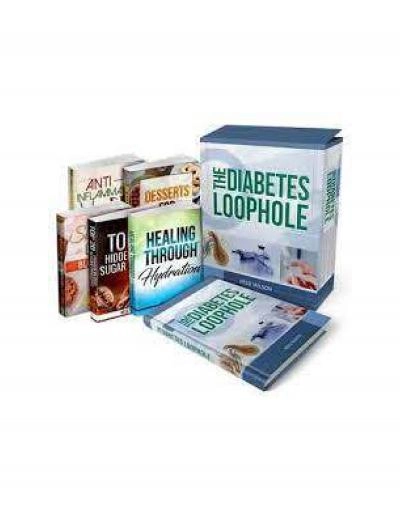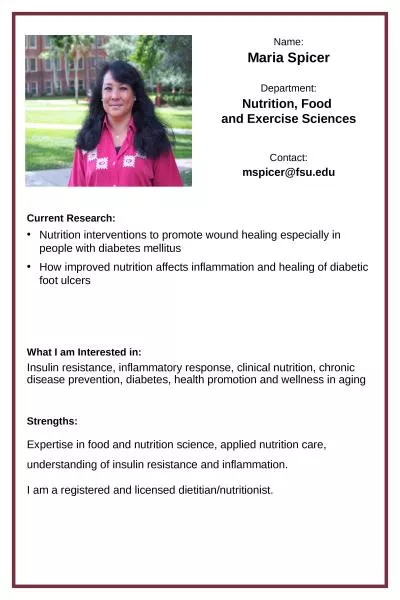PPT-Nutrition in Care Homes for People with Diabetes
Author : quinn | Published Date : 2022-06-15
Kurt Maloney Specialist Dietitian Bradford Nutrition amp Dietetic Department St Lukes Hospital Objectives Identify the CQC regulation for nutrition amp hydration
Presentation Embed Code
Download Presentation
Download Presentation The PPT/PDF document "Nutrition in Care Homes for People with ..." is the property of its rightful owner. Permission is granted to download and print the materials on this website for personal, non-commercial use only, and to display it on your personal computer provided you do not modify the materials and that you retain all copyright notices contained in the materials. By downloading content from our website, you accept the terms of this agreement.
Nutrition in Care Homes for People with Diabetes: Transcript
Kurt Maloney Specialist Dietitian Bradford Nutrition amp Dietetic Department St Lukes Hospital Objectives Identify the CQC regulation for nutrition amp hydration Discuss the dietary management of diabetes . People with diabetes have high blood glucose also called high blood sugar or hyperglycemia Diabetes is a disorder of metabolism the way the body uses digested food for energy The digestive tract breaks down carbohydratessugars and starches found in By. Hellen C Baliach. Consultant . Clinical . Nutritionist. Objectives . Definition of terms. Outline of objectives of Medical Nutrition Therapy. Outline of nutritional assessment. Nutritional data from diabetes clinic andDiet Advicory Clinic (DAC). Chris . Atkeson. CMU Robotics Institute. 6/21/17. Future Health Care Will Emphasize. Care outside a doctor’s office or hospital. Preventive care. Early detection. Chronic care. Behavior change:. Smoking. http://www.vinafengshui.com/wp-content/uploads/2014. Presentation Purpose. To increase knowledge about identifying carbohydrates, carbohydrate counting, and portion sizes of carbohydrates. To understand the important role of the diet in diabetes. National Network of Libraries of Medicine,. Pacific Southwest Region . Becky Swift, . Director. Phoenix Indian Medical . Center. Medical Library. Kay Deeney, Educational Services Coordinator. National Network of Libraries of Medicine, Pacific Southwest Region. . SYFTET. Göteborgs universitet ska skapa en modern, lättanvänd och . effektiv webbmiljö med fokus på användarnas förväntningar.. 1. ETT UNIVERSITET – EN GEMENSAM WEBB. Innehåll som är intressant för de prioriterade målgrupperna samlas på ett ställe till exempel:. Noji SEATTLES POPULAR NOJI GARDENS HAS ENJOYED A VERY GOOD YEARsince opening in mid2000 Noji Gardens is being developed by HomeSight a non-profit community development corporationwhich primarily serve Residents at Holcroft Grange in Cheshire were delighted by the company of adorable furry critters at the home today. Looking for facility based residential care homes in the UK? Connect with Minster Care Group that provides amazing nursing care services for elderly. Dr Adam Gordon. Clinical Associate Professor in Medicine of Older People. adam.gordon@nottingham.ac.uk. @adamgordon1978. Optimal was funded by NIHR Health Service Delivery and organisation (HSDR 11/021/02) The views and opinions expressed herein are those of the authors and not necessarily reflect those of the NIHR HSDR or the Department of Health.. Type II and Pre Diabetes Eat Right 4 Your Type | Featuring brandnew targeted food and supplement lists specific to diabetes that readers wont find anywhere elseAmericas fastestgrowing health problem just got dealt a major blow Dr Peter J DAdamo the creator of the Blood Type Diet which has forever c Download PDF The Diabetes Loophole™ eBook by Reed Wilson - A detailed program aimed at helping you understand and address your body\'s requirements when experiencing diabetes symptoms. Food . and . Exercise Sciences. mspicer@fsu.edu. Nutrition interventions to promote wound healing especially in people with diabetes mellitus. How improved nutrition affects inflammation and healing of diabetic foot ulcers. Experience the best eye care center in Pune. The best clinics for your eye health, include the prestigious Dr. Sonalika Eye Clinic. At Hadapsar, Amanora, Magarpatta, Mundhwa, Kharadi Rd, Viman Nagar, Wagholi, and Wadgaon Sheri
Download Document
Here is the link to download the presentation.
"Nutrition in Care Homes for People with Diabetes"The content belongs to its owner. You may download and print it for personal use, without modification, and keep all copyright notices. By downloading, you agree to these terms.
Related Documents

